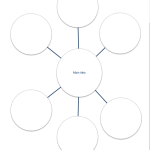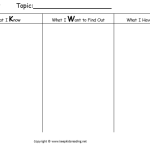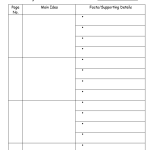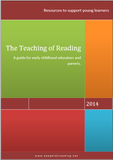Graphic Organisers support children’s comprehension of texts. More can be found as attachments in ‘The Teaching of Reading’ e-book which is now available for download here.

Concept Map/Cluster Web
A concept map helps children to organise and identify the main idea/s of a text and the supporting facts.
Think of and record connections made to ‘A time in my life’, ‘Another book’ and ‘A person I know’.
Another resource which supports children as they learn to self-question. Children can fill out after reading or while reading. Children write down questions that they asked themselves- ‘I wonder…’.

KWL Chart
Before reading a text, it’s beneficial to have children activate their prior knowledge on a topic. The KWL chart organises this with 3 columns- ‘What I know’, ‘What I want to find out’ and (to use as a discussion after reading) ‘What I have learnt’.
Looks, Sounds, Feels Like Y-Chart
This organiser has three headings. Children think about what the setting (specific scene or even character) looks like, sounds like and feels like, and write their ideas under the appropriate heading. This is designed to help children really ‘jump into’ the book.

Main idea/summary Worksheet
Helps children summarise texts. Children find the main idea from specific pages and identify supporting facts, ideas and details.
This chart assists children in coming up with a range of questions to ask during/after reading.
Story Map Overview
A template to help visualise the structure of a text. Identify the type of text, setting, characters and key events.
Story Sequence Template
Helps children order the events of a story. Can be used for fiction or non-fiction (listing the steps in a procedure).
Allows children to work on using context clues in the text and images to work out what words mean.





